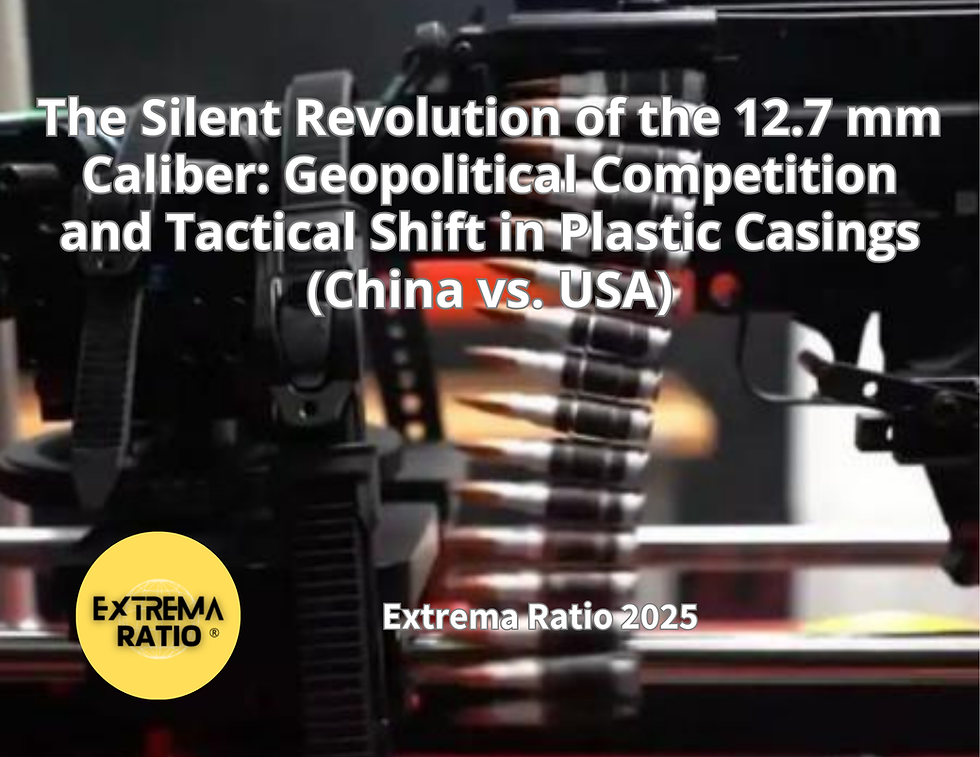Financial Cold War: China Dumps US Debt and Hoards Gold for Protection
- Nicola Iuvinale
- 20 ott
- Tempo di lettura: 4 min
The Geopolitical Drivers of the Global Gold Rush
The significant global reserve rebalancing has seen the share of gold held by central banks surpass that of U.S. Treasury securities for the first time since 1996—a historic shift described as "the most significant global rebalancing in modern history."
This dramatic rush to gold, supported by massive inflows into ETFs (and highlighted by China's gold reserves surging to a ten-year high of 7.68% of its total reserves), is driven by a profound strategic distrust in the U.S. dollar-based financial system.
The shift is motivated by three critical factors:
Financial Instability: The ballooning U.S. national debt ($38 trillion) raises fundamental questions about the dollar's credibility, compelling nations to strategically reduce their exposure to sovereign debt risk.
Geopolitical Risk & Dedollarization: The escalating U.S.-China rivalry necessitates economic de-risking. Gold is viewed as the only "sovereign asset" immune to sanctions, a crucial lesson learned from the freezing of Russian assets. China's massive gold accumulation is the practical translation of its geopolitical will to dedollarize global trade, support the use of the Yuan, and mitigate U.S. financial hegemony.
Monetary Defense: The impending phase of global monetary easing (including likely Fed rate cuts and expansive measures in China) drives demand for gold as the ultimate hedge against inflation and the dilution of currency purchasing power.
The gold crossover is not a cyclical phenomenon but a structural change reflecting the collective desire for security and financial autonomy in an era defined by geopolitical instability and an escalating financial cold war.

by Gabriele and Nicola Iuvinale
For the first time since 1996, the share of gold in global central bank reserves has surpassed that of U.S. Treasury securities. This historic crossover is not an isolated event but the culmination of a strategic shift that Tavi Costa, a Wall Street macro strategist, called "the most significant global rebalancing in modern history."
Behind the gold boom is a collective decision by global investors, driven by the need to seek certainty amidst uncertainty. The frantic buying of gold by central banks and ETFs signals that the world is reconsidering the U.S. dollar’s role as a reserve asset in an increasingly turbulent geopolitical and economic landscape.
Gold Becomes the Sovereign Asset: Three Drivers of Change
The massive gold accumulation is not sudden speculation but a long-planned strategic shift responding to three powerful global risk factors:
1. The Dollar’s Credibility Crisis and Debt Burden
Distrust in the dollar's creditworthiness is deepening due to the U.S. national debt, which has reached a record $38 trillion. When the issuer of the global reserve currency is so heavily indebted, coupled with the prospect of political interference in Federal Reserve independence, the risks of holding its government bonds become evident. Central banks are thus reducing their exposure to what they view as a debt-overloaded asset.
2. The US-China Geopolitical War and the Drive for Dedollarization
Geopolitical risks have harshly exposed the political nature of dollar-denominated assets, with the escalating rivalry between the United States and China acting as a primary catalyst for the reserve strategy shift.
The Monitory Precedent: The freezing of the Russian Central Bank’s dollar assets served as a warning that holding large U.S. Treasury reserves is a strategic vulnerability that can be "weaponized."
The Geopolitical Will of China: For China, the drive to accumulate gold is the practical translation of its geopolitical will to "dedollarize" the world. The simultaneous selling of Treasuries and buying of gold provides the capital and the rationale to promote the use of the Yuan in trade with partners (especially BRICS and developing countries), effectively bypassing U.S.-dominated payment systems like SWIFT.
De-risking and Autonomy: By reducing its reliance on U.S. debt and increasing gold, which is non-sanctionable, China gains greater financial autonomy and mitigates its exposure to political pressure, positioning gold as the ultimate "sovereign asset."
3. The Hedge Against Monetary Easing
The world has entered a new phase of monetary easing. With the Federal Reserve showing a high probability of cutting interest rates (94.1%) and other nations following suit, global monetary policy points toward expansion. Monetary easing inevitably dilutes the purchasing power of currencies. Gold, as a natural physical asset with a finite supply, is recognized as the ultimate weapon against inflation and currency debasement.
The Numbers Speak Volumes
The data confirms the scale of this rebalancing:
China's gold reserves rose by $29.4 billion in September, bringing its share of total official reserves to 7.68%, a ten-year high.
Since 2025, the six largest gold ETFs have quietly increased their holdings by over 255 tonnes.
The most striking event occurred on September 19, when the SPDR Gold ETF added 18.9 tonnes of gold in a single day, with the market pouring nearly $1.2 billion into gold ETFs within 24 hours.
The domestic Chinese market saw the total size of national gold ETFs surpass 200 billion yuan, setting a new historical record.
In conclusion, the rush to gold is a thermometer of geopolitical and financial distrust. It is not just a reaction to inflation, but a strategic move by countries like China to mitigate risk and contest U.S. financial hegemony, using gold as the foundation for a less dollar-dependent global financial future.




Commenti